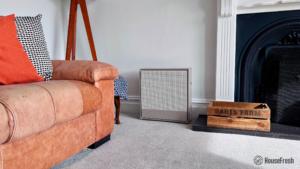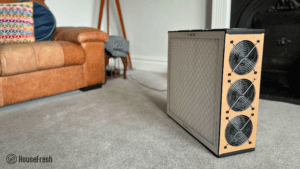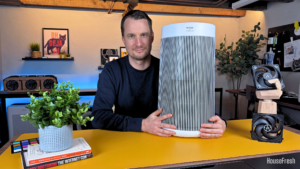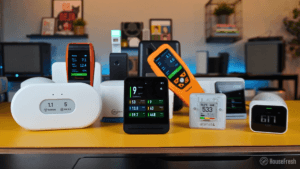Here’s the thing:
Most recommendations of “the best air purifiers” you will find online are nothing more than a list of the highest-selling models right now — or those that offer the highest affiliate commissions. They just want you to click any link on the page, so they can cash in their check.
I have personally tested every air purifier on my list and my top recommendation for most people is the Levoit Vital 200S, and I have data to show you why.
Since 2020, I have tested over 100 air purifiers, gathering data on air cleaning performance, noise levels and energy consumption at different fan speeds. Plus, I calculated how much money you’ll need to spend each year to run each of them 24/7 in your home.
Let me take you through the list:
➜ Levoit Vital 200S ︱ ➜ AirFanta 3Pro ︱ ➜ IQAir HealthPro Plus ︱ ➜ CleanAirKits Luggable Xl-7 ︱ ➜ Levoit Core 300S
Levoit Vital 200S
This is the one I recommend to most people because it ticks off most boxes.


What we really like
What we think could be better
For more details about the design, performance and long-term costs of the Vital 200S, you can read our full review here or watch my video review below:
AirFanta 3Pro
This is the most powerful air purifier you can buy for less than $200. It’s also portable.


What we really like
What we think could be better
Use the discount code HOUSEFRESH for 5% off when buying directly from AirFanta.
For more details about the design, performance and long-term costs of the AirFanta 3Pro, you can read our full review here or watch my video review below:
IQAir HealthPro Plus
This is the best option if you have an issue with odors or harmful chemicals.
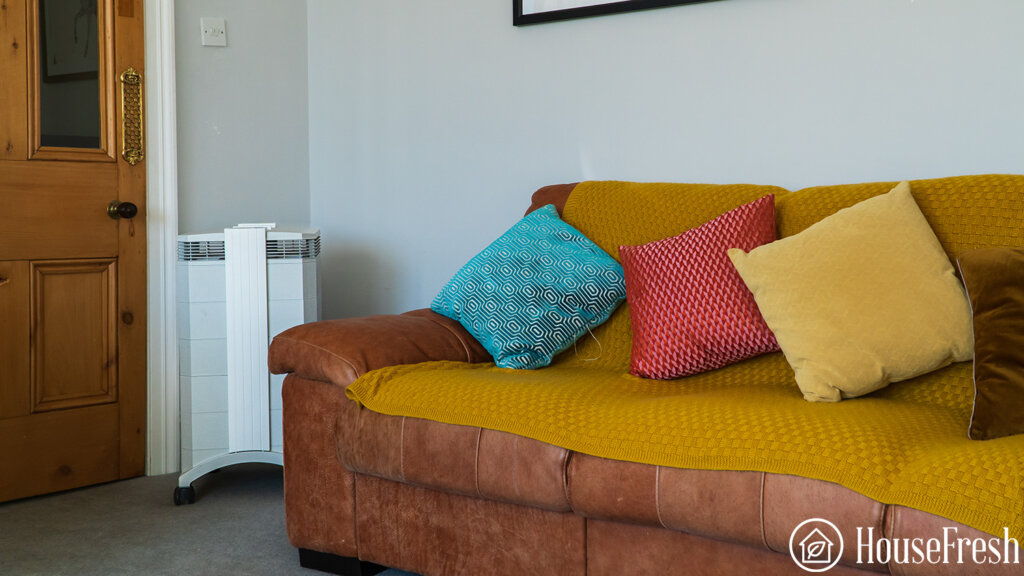
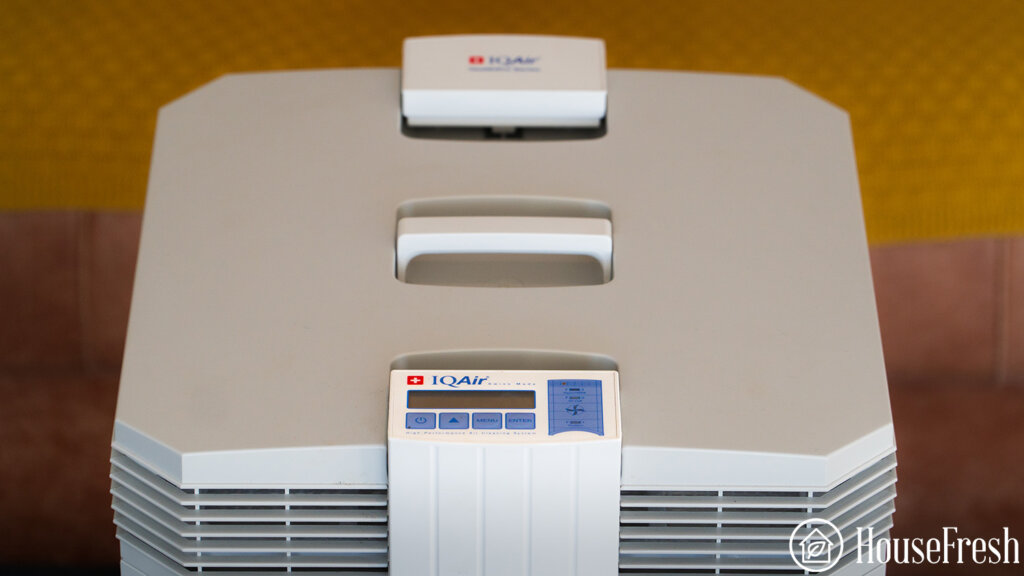
What we really like
What we think could be better
For more details about the design, performance and long-term costs of the HealthPro Plus, you can read our full review here or watch my video review below:
CleanAirKits Luggable XL-7
Generating under 40 decibels of noise at top speed, this is the quietest air purifier I have tested.


What we really like
What we think could be better
For more details about the design, performance and long-term costs of the Luggable XL-7, you can read our full review here or watch my video review below:
Levoit Core 300S
This is the smallest air purifier you can buy that won’t be a waste of money.
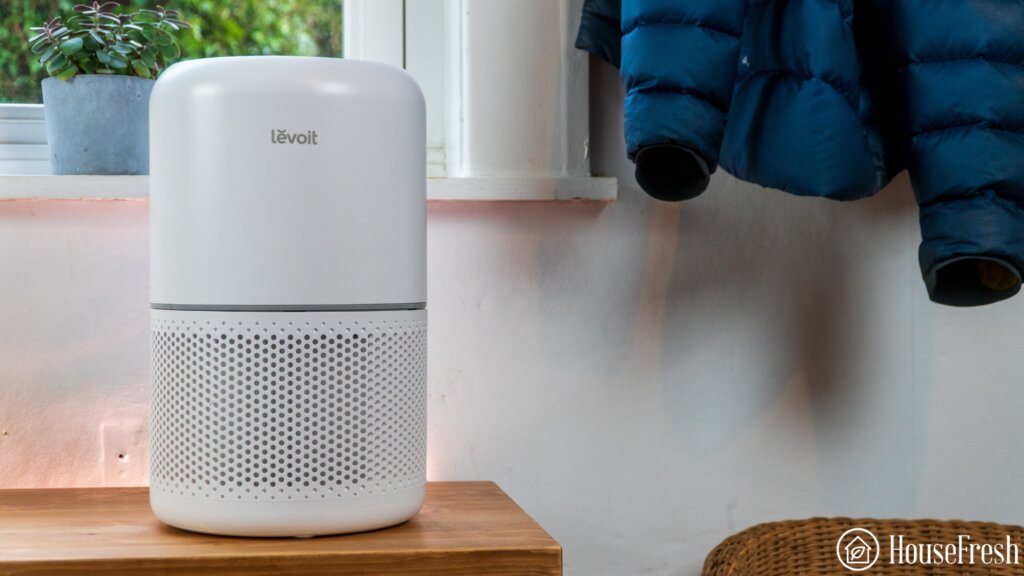

What we really like
What we think could be better
For more details about the design, performance and long-term costs of the Core 300S, you can read our full review here or watch my video review below:
Compare the specs
Check out the table below to find out more about the key facts and stats of every air purifier on my list.
| TOP PICK | BUDGET PICK | SMOKE PICK | QUIET PICK | SMALL PICK | |
|---|---|---|---|---|---|
| Levoit Vital 200S | AirFanta 3Pro | IQAir HealthPro Plus | CleanAirKits Luggable XL-7 | Levoit Core 300S | |
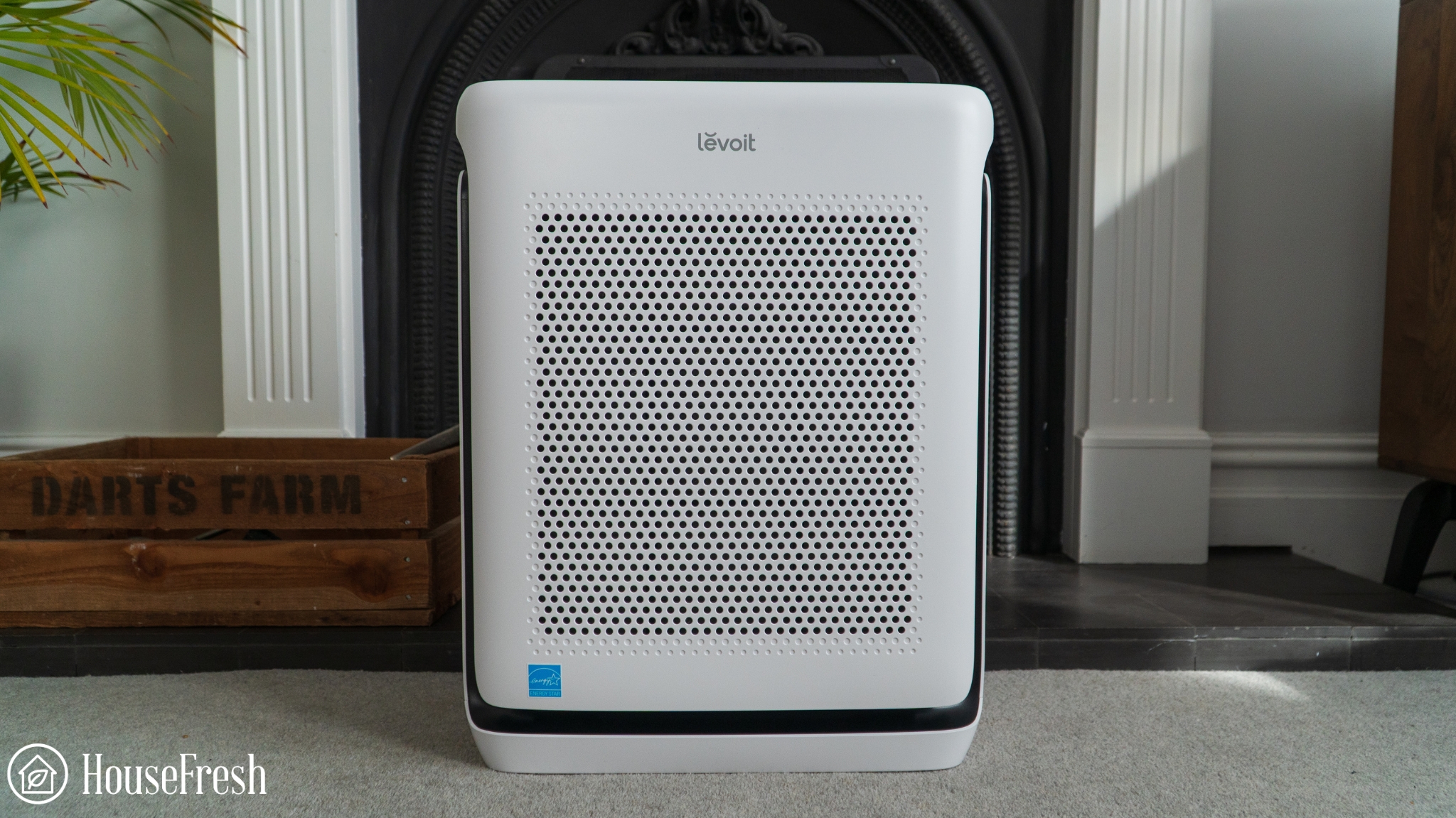 |  | 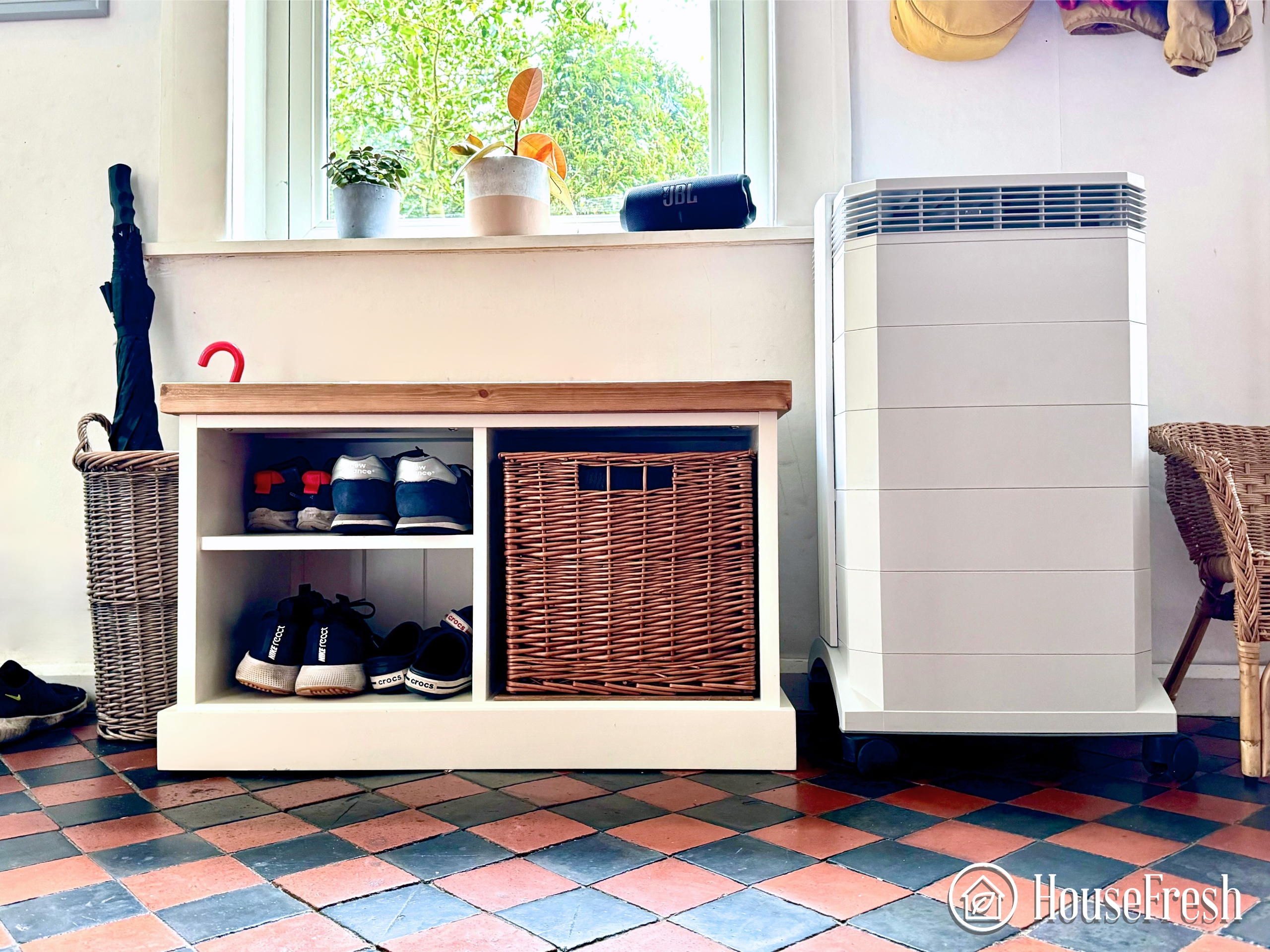 |  |  | |
| Time to PM1 zero | 23 mins | 17 mins | 28 mins | 23 mins | 45 mins |
| CADR | 263 CFM | 430 CFM | 250 CFM | 323 CFM | 156 CFM |
| Filter tech | Particle + carbon | H11 HEPA + optional carbon | HyperHEPA + V50-CELL carbon | MERV 13 filters | particle + carbon |
| Max room size (5 ACH) | 367 sq. ft. | 671 sq. ft. | 375 sq. ft. | 485 sq. ft. | 196 sq. ft. |
| Noise levels | 38-57 dB | 36-56 dB | 36-61 dB | 38.8 dB | 35-53 dB |
| Yearly running costs | $96.82 | $125.23 | $421.47 | $58.16 | $79.43 |
| List price | $189.99 | $159.99 | $949.00 | $299.00 | $149.99 |
Special mentions
Solid air purifiers that didn’t make the cut, but that could be a good choice for you.
While we only wanted to feature the best of the best units we’ve tested, it’s also worth mentioning some other air purifiers with outstanding performance.

Smart Air SA600
The SA600 pulls air from both sides of the device with its two sets of HEPA H13 and activated carbon filters. It doesn’t have any smart functionalities and the controls are straightforward with just four buttons. I really liked that the lights on the control panel go off automatically, which is a great feature for a bedroom.
In our particle removal test, the SA600 reached PM1 zero in 24 minutes, which is comparable to what we saw with the Vital 200S, the 5500-2 and the Luggable XL-7. This unit didn’t make our short list because the use of two sets of filters raised the long-term running costs to $198.02 per year.

Xiaomi Pro 4
The Pro 4 air purifier from Xiaomi comes with a tall cylindrical bonded filter, including a non-HEPA particle filter and a gas filter that (according to Xiaomi) has 650 grams of activated carbon pellets. In terms of air cleaning performance, the Xiaomi Pro 4 completed our particle removal test in 20 minutes, which is one full minute faster than the Levoit Core 600S.
To operate the Pro 4, you can use a flashy OLED touch screen without any physical buttons. After using this device at home for a few months, it became clear that the onboard screen lacks useful functionalities on the device for which you will need to use the app. This can be annoying at times when your phone is out of reach.

CleanAirKits Triple Exhalaron
The Exhalaron is another PC fan-powered air purifier from CleanAirKits. The Triple version comes with three PC fans and three cylindrical H10 HEPA filters, and has a CADR of 120 cfm. When we tested its air cleaning performance of the Triple Exhalaron running at its highest fan speed, it cleaned our test room in 46 minutes, which is faster than the popular Levoit Core 300 and the PuroAir 240.
As with other PC fan-powered air purifiers, the Triple Exhalaron is whisper quiet, reaching 40.5 dB when running at its top fan speed. The reason we didn’t include this air purifier in our main kist has to do with its price. At $359, this is quite an expensive small air purifier that won’t be suitable for all budgets.

Coway Airmega AP-1512HH Mighty
The Coway Airmega Mighty is the NYT Wirecutter’s most recommended air purifier since 2014 due to its reliability, affordable cost and good air cleaning performance. This has turned the Coway AP-1512HH into the most popular air purifier in the world.
In our particle removal test, it needed 26 minutes to reach PM1 zero, which is a good result for a device sold for under $250. But we didn’t shortlist it because we think it is now a little dated. In 2025, there are better options for performance per $ spent (AirFanta 3Pro), energy efficiency (Levoit Vital 200S), sound generated (CleanAirKits Luggable XL-7) and odor removal (Winix 5500-2).

Levoit Core 400S
The Core 400S from Levoit is an air purifier with app support that works well against VOCs thanks to its bigger-than-average carbon filter. You’ll get good performance against particulates, too, with the 400S completing our particle removal test in 28 minutes, which is much faster than more expensive devices like the Dyson TP07 (62 minutes) and the Mila (38 minutes).
As with other units in this ‘special mentions’ section, I believe there are newer models (such as the Levoit Vital 200S) that offer a better bang for your buck compared to what you get with the Core 400S.
The air purifiers we don’t recommend
Our data shows that these devices are overpriced and/or underperforming.
Unlike most consumer products, the work of an air purifier is hidden from the naked eye. Unless you use a high-grade laser sensor, you will have no idea if all the tinniest particles have been removed from your air.
We have been disappointed to see many air purifiers fail to live up to expectations set by marketing materials. We like to make consumers aware of these overpriced and underpowered devices, backed by the air cleaning performance test data we gather with every review we conduct.
- Okaysou AirMax 10L Pro – This device became a best-seller on Amazon thanks to a successful influencer campaign on TikTok. In our testing, it failed to match the hype or price point. Update 26 June 2024: Okaysou is now bankrupt, and you can no longer buy it and their 5-year warranty is now worthless.
- Molekule Air Mini+ – Molekule has been touting its new PECO technology but has had to remove many of its previous marketing messages due to misleading advertising claims and class action lawsuits due to the lack of performance. In our test, it was very poor at removing PM1 particles and emitted 86 dB at its highest fan speed — louder than a leafblower! If this device is recommended in 2025, know that this is due to the high commission for the publisher recommending it, as they start at $349 and go up to $999 with the Pro series.
- Rainbow RainMate – This is an old device that is still touted as being able to clean the air. However, it was the worst-performing device in our tests, making me think that water air-cleaning is totally useless in even the smallest of home rooms. Don’t rely on this device to clean your air; stick to a good old mechanical filtration.
- PuroAir 240 – Previously sold under the name ‘PuroAir HEPA 14 240’, the PuroAir 240 didn’t live up to the marketing promises. After completing all our tests, we found that this air purifier has poor air cleaning performance for its price and is too underpowered to clean spaces of up to 1,100 sq. ft., which is something that is mentioned multiple times in the marketing materials and on PuroAir’s website.
What to look for when buying an air purifier
The basic things you need to consider to make sure you’re not being duped into buying a device that won’t help.
The qualities you should look for in an air purifier will differ if you want to reduce allergy triggers at home, live near a busy road, need to improve your air quality during wildfire season or deal with pet odors and dander. However, some things will always be important.
1. The size of the room and the CADR (clean air delivery rate) of the air purifier.
It’s vital to analyze these two aspects together, considering many brands overstate the cleaning performance of their units. It’s not necessarily unfunded, but there’s a catch.
According to the EPA, for an air purifier to be truly effective, it should be able to perform 4.8 air changes per hour (or ACH) in a room. Unfortunately, some brands will advertise the room size coverage to achieve just one ACH, being able to claim a somewhat opaque wider coverage.
The rule is simple: a higher CADR (stated in CFM, or cubic feet per meter) means greater cleaning power. Instead of focusing on room sizes recommended by the manufacturer, look at the CADR rating.
The best way to go about it is to figure out how powerful an air purifier needs to be for your space’s specific dimensions. You can use our calculator to do just that:
2. The filtration system
Pure mechanical purifiers stand their ground on efficiency and safety when it comes to air filtration. The most comprehensive systems feature three stages:
- A pre-filter to trap larger particles that would otherwise clog the main filter faster. The best units feature a removable pre-filter, making it easier to vacuum, rinse and keep in top shape. But you may find the pre-filter attached to the main one in budget air purifiers. It’s better than not having one, but it’s also harder to clean.
- An activated carbon filter to adsorb gasses and smells. If you need an air purifier to deal with mold spores, for example, an activated carbon filter won’t be absolutely necessary, as spores are not gases but particles.
But if you are after a device to help you reduce unwanted smells or deal with chemicals and VOCs, then an activated carbon filter will be able to do what particle filters (like HEPA or MERV 13) cannot.
- Lastly, the main particle filter will remove microscopic particles from the airstream. HEPA-grade filters can remove at least 99.97% of particulate matter as small as 0.3 microns.
Yet, a denser filter just for the sake of it—like with PuroAir’s HEPA 14—is not necessarily equivalent to a better performance. On the contrary, it’s important to balance fan power and filter thickness. If a filter is too dense and the air purifier is not potent enough to draw a good amount of air and pass it through, the cleaning power is reduced. It takes longer to remove airborne pollutants with restricted airflow.
Many mechanical air purifiers also feature a built-in ionizer that can boost the units’ CADR and efficiency. Although ionizing technology is continuously evolving, at HouseFresh, we prefer those units where, like in the Winix A230 or the 5500-2 included in the list, the ionizing function can be disabled at the user’s convenience.
3. Noise output
The fan that powers your air purifier can generate a lot of noise, and you are unlikely to want to use your unit regularly if this noise becomes too much. That is why it’s worth factoring in how noisy the unit will be, especially when running at its top fan speed. This is particularly important if you want an air purifier for the bedroom or your home office.
Two things to consider:
- Smaller units won’t make much of a difference to the air when running at the slowest fan speed, and they tend to be noisier than larger ones at top speed.
- Some air purifiers suited for big spaces can be whisper-quiet when running at their lowest fan speeds, so it is worth going bigger to get a unit that will run quieter.
4. Long-term costs
In addition to the upfront cost of buying an air purifier, you should also consider associated maintenance costs such as energy usage and filter replacement.
Running your air purifier 24/7 2ill substantially improve your air, but that also means an appliance adding to your electricity bill all day, year-round. The good news is that many energy-efficient units out there won’t significantly affect your monthly expenses. However, make sure to check this to avoid unpleasant surprises, as some units are on the power-hungry side.
A few things to consider in terms of filters:
- Filter replacement costs vary among brands and models — and so does the required replacement frequency.
- The longer a unit has been on the market, the more probable good-quality generic filters will be available.
- More and more brands are offering convenient filter subscriptions that are cost-effective and include perks for happier customers.
5. Extra features
An extensive control panel with smart functions, app support, onboard air quality sensors or remote controls are handy perks that can make life easier. A no-lights mode for the bedroom, for example, is definitely something worth considering.
However, if asked, I would recommend not to sacrifice CADR or performance over fancier tech-y bonuses. After all, the purpose of an air purifier is to clean the air.
How we test air purifiers
Saying we tested 100+ air purifiers in the last four years sounds great, doesn’t it? But what does testing mean for HouseFresh?
It’s definitely not just getting the units out of their boxes to take some cool editorial pictures for our articles. On the contrary, it is a thorough process that involves reliable testing devices to cover the many aspects of air purifier evaluation.
Air cleaning performance is key, for sure. But we go further. When you decide to invest in an air purifier that will be constantly running at home, things like long-term costs and noise output are also important in a real-world context.
Our testing process includes the following steps:
Step 1. We conduct a particle removal test
First, we burn some incense to pollute the air. Using our PurpleAir indoor sensor (which we’ve chosen after thorough research), we measure how fast each unit can remove PM10, PM1 and PM2.5 at top fan speed. The PurpleAir sensor provides regular updates on particulate matter levels, allowing us to create graphs showing the evolution of air quality in the room.
Step 2. We assess the power of the fan

We also measure the unit’s fan power with the Testo 410i anemometer. It’s interesting to see the variation in airflow coming out of the unit at every fan speed. Especially considering the AHAM Verified program measures CADR at the highest speed setting.
Step 3. We measure sound levels generated
For noise levels, we use a commercial sound meter from 3 ft. away to measure how much noise in decibels (dB) is generated by the air purifier at each fan speed. Like other measurements, the data is displayed in our reviews, but we also share the results on HouseFresh YouTube channel.
Step 4. We measure electricity consumption
We use a power meter to record how much electricity (in watts) the air purifier consumes when running at each of its fan speeds, including sleep mode and stand-by mode.
Step 5. We estimate yearly maintenance costs
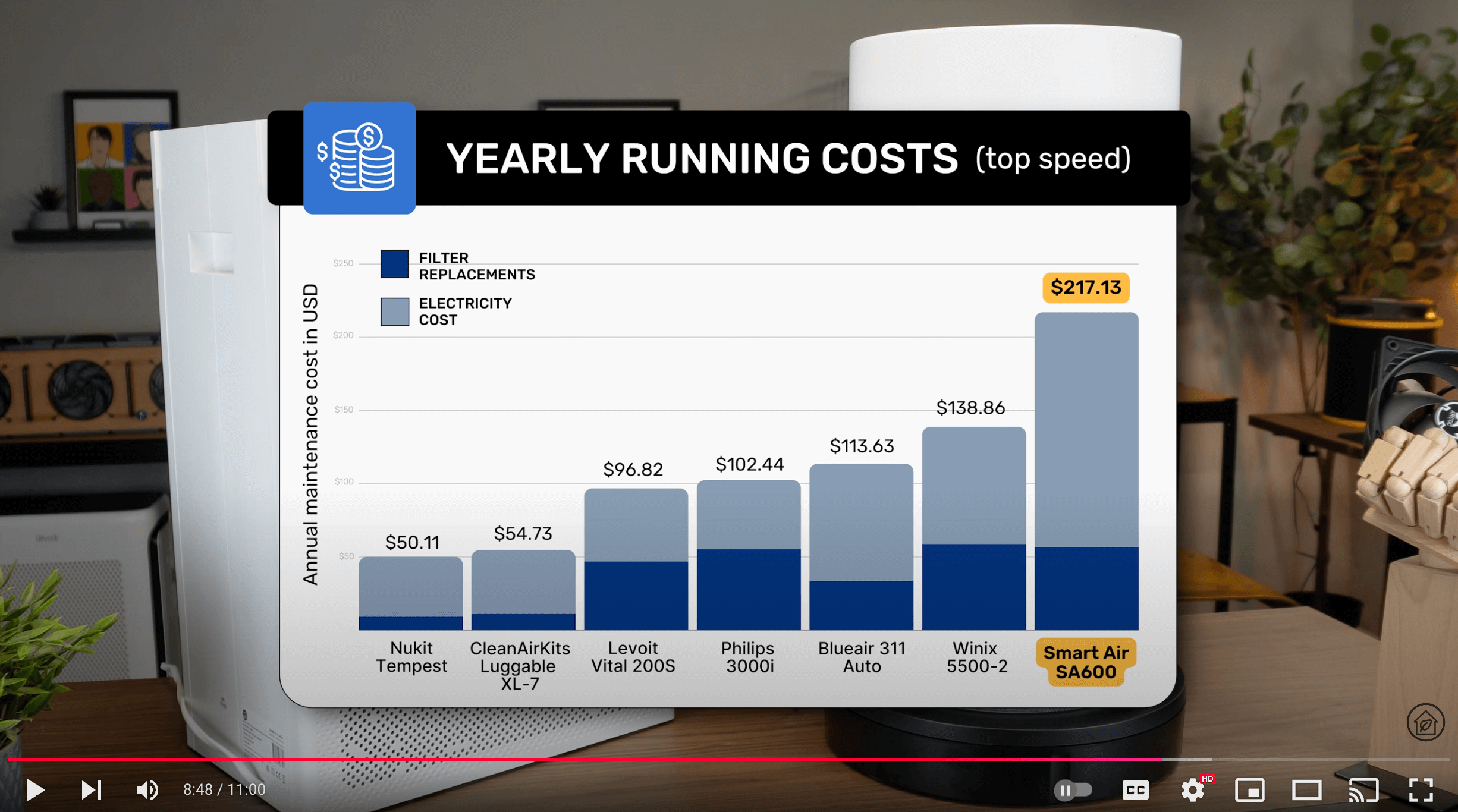
We also calculate the long-term costs you can expect to spend each year to run the air purifier. First, we use the appliance energy calculator from the U.S. Department of Energy to calculate how much money running the air purifier will add to your yearly energy bill. Next, we conduct desk research to determine the costs of genuine and generic replacement filters, using filter lifespan information stated by the manufacturer.
Step 6. Real-life experience
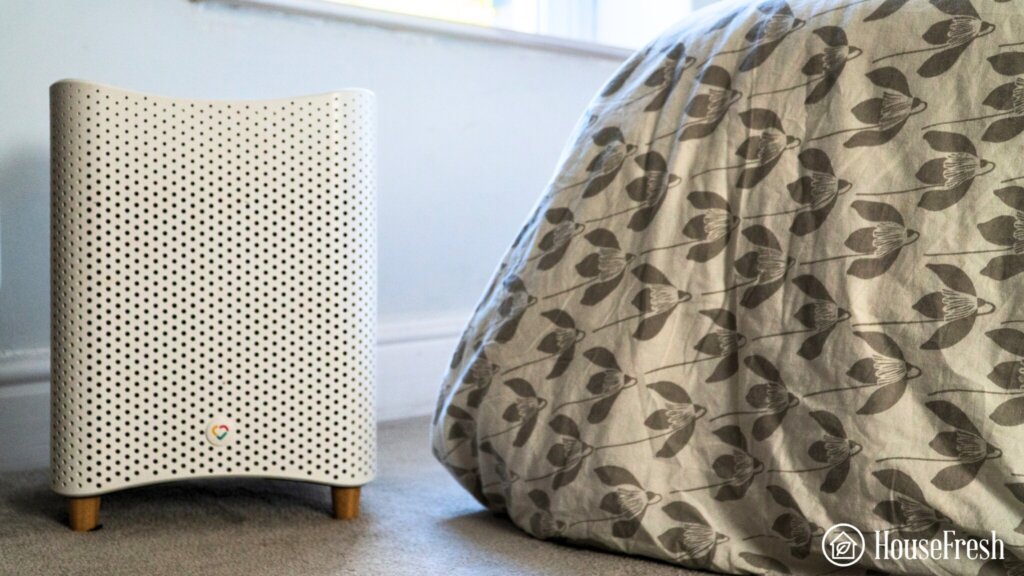
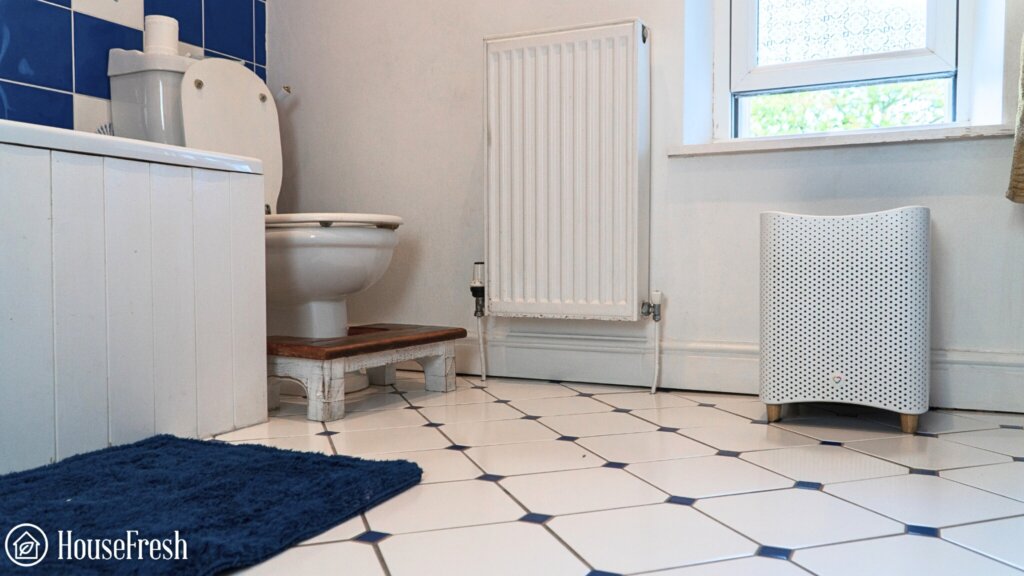

All four steps comprise the core performance evaluation we run on every unit. We know the data is solid. However, there’s something about everyday use that cannot be measured in a lab-test situation. That is why our “final step” is using the air purifier regularly at home in an ordinary context. You can learn a lot by just living with a device.
Wrapping up
Air pollution is real. Over one-third of Americans still live in areas with unhealthy air and suffer from the consequences to their health. Improving our indoor air shouldn’t be something to take lightly.
Considering how a high-performing air purifier can improve people’s daily lives, it’s somewhat infuriating to find the internet flooded with unfounded reviews of air purifiers that lack the research and data to back them up.
Our goal at HouseFresh is to help consumers find the right air purifier to fit their needs and budgets in real-life situations. We don’t take free units from manufacturers and are not afraid to raise our voices when a hyped unit turns out to be a disappointment. Most importantly, we are driven by a transparent, hands-on approach and constantly improving methods of real-life testing.
We want our readers to find actual, helpful solutions. We may not always address all of your doubts in our articles. That’s why my mailbox is always open: danny@housefresh.com
Since 2020, we’ve been conducting our tests in the same 728-square-foot room to gather comparable data. We buy every device with our own money because we don’t want any strings attached. We are data-driven, and all our findings are openly published on the site.
Our tests reveal what manufacturers won’t tell you. That is why we don’t blindly repeat manufacturers’ specifications and marketing claims without further research or hands-on testing. We know that in many cases, their data has a degree of bias, with with many brands overstating the capabilities of their devices with clever marketing and outright lies.



